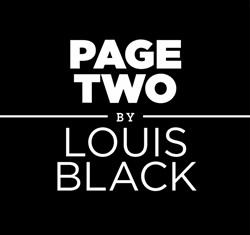Page Two: In the Moment
New novel finds John Sayles at the peak of his powers
By Louis Black, Fri., July 22, 2011

Many, many years ago, in a galaxy that seemed so damn close but proved to be so far away that it was never visited again, Jacques Rivette's acknowledged cinematic masterpiece Celine and Julie Go Boating was screened. Rivette was one of the most important filmmakers to come of age as part of the French New Wave, a film movement in the late 1950s through the mid-Sixties that saw a generation of gifted cinematic talents come into their own. Many of them began as film critics, only to evolve into filmmakers. As writers, they issued polemics and manifestos but were seen as a movement more because of chronology and a shared passion for film than because of any service to a common dominant aesthetic. Jean-Luc Godard and François Truffaut were the Lenin and Trotsky of this movement: Godard was a polemicist (though polemicist as artist as innovative filmmaker) whose work was political and aggressive, ripping through and tearing up film language; Truffaut, a poet (as artistic innovative filmmaker), was more interested with content than form and with life more than politics.
Godard, Truffaut, Eric Rohmer, Claude Chabrol, and Rivette were the core group, but also right there were Alain Resnais, Agnès Varda, Louis Malle, and Chris Marker, among others. Rivette was the most aesthetically ambitious, making films that were often impenetrable, multilayered, and perplexing. Fascinated with the differences between theatre and everyday life, he disdained scripts, heavily relying on improvisation for a more natural texture. Along these lines, some of his films are very long, including the four-hour L'amour fou in 1969 and the legendary 13-hour Out 1: Noli me tangere in 1971.
This particular screening occurred at a time when I would eagerly watch any French New Wave film that I could. Given my short attention span, it was fortunate that many of Rivette's films were almost impossible to find. The exception was Celine and Julie Go Boating (1974), supposedly his most accessible film at only three hours and 15 minutes long. The UT film society I worked for showed it one summer. I knew I should see it. I even knew I had to see it. But it was more than three hours long.
At the time, there was a 16mm sound projector set up in my living room. Often, we would borrow prints shown on campus to watch at home. Thus, I considered just borrowing the Rivette print after the screening to watch at home. I knew, however, that I was just lying to myself, well aware that I lacked the discipline to watch a three-plus-hour movie on my own. I decided I'd stay at the screening for the first hour, after which, again lying to myself, I would leave and later watch the rest at home.
The first hour was good, so I stayed for the second hour, which was even better. The first 45 minutes or so of hour three were brilliant, but the last half hour proved a revelation. The film educated you with its content in such a way that each subsequent segment became richer and more resonant. I'm not just getting cute about a linear, sequential narrative; rather, there were layers that allowed the film to expand into a work that was unique and exhilarating.
Over the years, my eagerness as an audience member for any kind of culture has receded from the ambitious to the more complacent. No longer am I excited by unusually lengthy, complex works. Instead of champing at the bit to plunge into a dense, mysterious, creative swamp, now I usually find myself thinking about a nap.
All this by way of plugging John Sayles' brilliant new novel, A Moment in the Sun. Published by McSweeney's, at 955 pages it is very much a "cat-squasher of a book," as Kirkus Reviews described it. Despite my long friendship with Sayles and his partner, Maggie Renzi, when I first held the book, I felt a certain sense of despair. Usually, I'm as eager as anyone when it comes to friends' creative work. With this novel, I wasn't even sure how to physically approach reading it, thinking that at best it would be months before I even tried to read it, if at all.
When Sayles read from the novel at BookPeople, he chose a section about a miner being denied work because it was thought he might be a labor organizer. The tone of the writing, accompanied with this listener's frustration at the powerlessness of workers, resulted in my remembering the feelings I had when first reading such early 20th century social realist novels as The Jungle by Upton Sinclair.
A couple of evenings after that, I was unable to sleep, so I picked up A Moment in the Sun just to consider it. Three days later, as dawn was breaking, I finished reading, only wishing there was more. Yes, it's political, but it is also an exciting, brilliantly rendered read – character-driven (and there are a number of characters) and involving. It's set at the beginning of the 1900s, as this country was coming into its own internationally and unfortunately already evidencing at least some of the bad habits that would haunt it through the century.
It wasn't friendship that kept me reading, but rather that I couldn't stop. This will probably be the first of a number of columns (not consecutive) that will be about Sayles' A Moment in the Sun, a surprisingly great adventure that finds that gifted writer at the peak of his powers.
For more on Sayles and A Moment in the Sun, see "National Treasure," Books, May 13.









